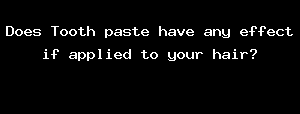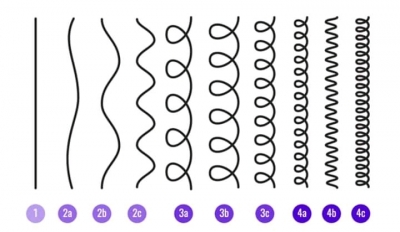profile/6023IMG_20200831_231603.jpg
GoodnessGoshen

Does Tooth Paste Have Any Effect If Applied To Your Hair?
~3.7 mins read
There are plenty of people who claim that putting toothpaste in your hair is safe and effective for a variety of purposes. Using toothpaste to remove unwanted body hair, help your hair grow, and help color your hair are just some of the claims.
But some of these actually seem to contradict each other, and most of them don’t really align with the mechanism of most actual toothpaste ingredients. We did some detective work to discover if toothpaste actually does have any proven benefits when applied to your hair or scalp.
What does toothpaste do to your hair?
There hasn’t been any medical research done to demonstrate what happens to your hair strands when you apply toothpaste. The individual ingredients of a toothpaste formula can provide some indication as to how it can affect your hair, but every formula is different.
As a general rule, toothpaste may be able to influence your hair’s color and growth, but not necessarily in the ways that you might hope.
Does toothpaste make your hair lighter?
Certain types of toothpaste claim to whiten your teeth with lightening ingredients, such as hydrogen peroxide. Hydrogen peroxide can make your teeth appear whiter, which means it might make your hair look lighter, too.
But using hydrogen peroxide toothpaste to lighten your hair is probably not such a great idea. For one thing, toothpaste is extremely difficult to apply evenly to your hair, since that isn’t what it’s made for. There’s no tried-and-tested instructions for effectively using toothpaste to lighten hair on your body or your scalp.
Can toothpaste bleach your hair?
Yes, leaving toothpaste on your hair long enough may bleach your hair, but that doesn’t mean you should try it. Even if whitening toothpaste can “bleach†or lighten hair on your skin and on your body, the result will be somewhat unpredictable. If you leave toothpaste on any of your hair for a significant length of time, the toothpaste will draw moisture out of your hair strand, leaving it dry and prone to breakage. It may also damage the hair follicle if applied to your skin or scalp.
It’s also not very cost effective to apply toothpaste to large sections of your hair, and can be difficult to get the toothpaste out once it dries.
Does toothpaste help hair removal?
You may have seen viral videos on the internet suggesting that toothpaste can be combined with other ingredients to dissolve unwanted hair, especially body hair. There is no evidence to suggest that this is an effective and safe method of hair removal.
In the process of removing hair from your skin, it’s likely that toothpaste would cause irritation. Toothpaste also contains alcohol and hydrogen peroxide, both of which dry out your skin. With many more gentle and efficient ways to remove hair from your body, there’s no strong case to be made for using toothpaste.
Can toothpaste help hair growth?
Many types of toothpaste contain peppermint oil, extract, or flavoring. This is probably why some people think applying toothpaste to your scalp can encourage hair growth.
It’s true that peppermint oil is a natural home remedy for regrowing hair, and it may stimulate blood flow to your scalp. There are even clinical studiesTrusted Source supporting the use of peppermint oil products to help hair grow.
But that doesn’t mean putting toothpaste on your scalp will have the same impact. Peppermint oil would need to be powerfully concentrated to impact hair growth — and the other ingredients in toothpaste dilute the peppermint extracts in your toothpaste. So it isn’t likely that topically applied toothpaste works for hair growth.
Does toothpaste have any topical benefits for your scalp or facial skin?
Toothpaste has some ingredients in common with skincare products and acne medication. Baking soda and sodium lauryl sulfate are two ingredients used in both skincare and toothpaste formulas. All toothpaste formulas also have antiseptic and antibacterial ingredients, such as triclosanTrusted Source, to support cleansing your mouth. For these reasons, some people advise applying a bit of toothpaste on your skin to blemishes and pimples, the way you would use a pimple cream.
Toothpaste probably can dry out some bacterial pimples, and may even reduce inflammation or redness. But it’s not a recommended treatment for acne. Using toothpaste on your skin can have unpredictable results and can trigger more breakouts and result in:
clogged pores
flaking
dryness
redness
Can it help remove hair dye staining on your skin?
Sometimes a DIY dye job can leave dark patches on your scalp and around the crown of your head. Toothpaste has been suggested as a way to remove these markings because of its lightening ingredients. Again, there is no medical research that supports using toothpaste for this purpose.
The most likely outcome is that you will get toothpaste in your freshly dyed hair, which could tamper with the color.
profile/6023IMG_20200831_231603.jpg
GoodnessGoshen

Knowing Your Hair Type
~7.1 mins read
Let’s start here: Your hair is beautiful.
It may soak up your time and money. It may morph the moment you step out into actual weather. It may dramatically defy what other people say “good hair†should do. Never mind all that.
Whether fine, thick, long, short, matte, glossy, curly, coily, or straight, your hair deserves respect. Get to know your hair’s curl patterns, its porosity, density, and styling needs because healthy self-care includes your hair.
What does hair type mean?
Your hair type is primarily based on your hair’s curl pattern. The amount of curl in your hair is determined by your hair follicle. The shape of your follicle determines whether your hair is:
straight
wavy
curly
coily
The more oval or asymmetrical your follicle is, the curlier your hair will be.
Your hair type is determined by genetics.
You can alter your curl pattern with heat or chemicals, and your curl pattern can changed somewhat by hormones or medications you’re taking, but your basic curl pattern is in your DNA.
Every time your hair goes through its growth cycle, those genetic characteristics are reasserted.
What types of hair are there?
Andre Walker, known for decades as Oprah Winfrey’s stylist, is credited with devising a system that classifies hair according to one of four curl patterns:
Type 1 Straight hair
Type 2 Wavy hair
Type 3 Curly hair
Type 4 Coily hair
These types are further divided into subcategories based on the tightness or looseness of the curls and coils. It may sound simple, but like most attempts to define human characteristics, it isn’t.
You could have type 4C at your crown and 4A at your temples. Your hair could be straight at the root and wavy at the ends. The key is to understand what each type needs so you can style it well and keep it healthy.
How to style and care for your hair type
Type 1: Straight
Type 1 hair has no natural curl. The individual strands may be fine or coarse, thick or thin, but they fall without waving from root to tip.
Type 1 hair has a tendency to become oily, so many stylists recommend that you check the label to be sure the product you’re buying isn’t going to add extra oil to your hair.
Stylist Kristi Lovelace also suggests avoiding heavy serums or butters. “With straight or fine hair, I’d recommend texture sprays instead. Dry shampoos are also a good idea,†she said.
Washing your hair too often can cause your scalp to overproduce oils, so dry shampoo is a boon for people with straight, oily hair.
Lovelace says most women come into salons with Instagram or Pinterest photos of the style they want.
“I usually recommend styles based more on face shape than on hair type,†she said. “One style that’s really popular right now is a chin-length blunt cut, which works really well with straight hair.â€
Type 2: Wavy hair
Type 2A
The natural state of type 2 hair is a gentle, tousled texture. From the roots to around eye level, your hair is fairly straight. And from eye level to the ends, you have a loose, undefined wave.
To keep from flattening out that wave, steer clear of oil-based or creamy products. Instead, stylists recommend that you boost the base with a light mousse or use a gel to define those waves.
Type 2B
As with 2A, type 2B hair curls from the midpoint to the ends. The curls have a more defined S shape. It may require a little more effort to straighten, but it’s easy to create that beachy look with a spritz of salt spray.
Type 2B is ideal for the balayage trend, where stylists hand-paint color on the outer layer of hair.
“When people come in with pictures of balayage,†Lovelace said, “the photo is always going to show wavy hair because when that hair curls around, it’s getting dimension from the back side. People with wavy hair don’t have to go out of their way to style this look.â€
Type 2C
The most well-defined S-shaped waves are type 2C. The wave pattern may begin close to the crown and tumble downward. Type 2C hair is often thick and can be prone to frizz in damp weather.
Lovelace recommends using a diffuser, a toothy devise that snaps onto the end of your blow dryer and helps eliminate the frizz.
“I am a huge advocate for products, especially where you’ve got environmental factors like hard water and salt water,†Lovelace said. “Anti-humidity products are huge.â€
People with 2C hair may be frustrated with alternating between daily straightening, which can damage hair, and trying to find ways to enhance and control their waves. The good news is that many lightweight mousses now contain anti-humidity ingredients along with moisture.
Type 3: Curly
Type 3A
With type 3A hair, S-shaped curls form loose loops. The curls have a circumference a little wider than the large end of a taper candle. One important styling note: Brushing this type of hair can wreck curl definition and lead to a frizzy mane.
Silvana Castillo, master stylist and founder of The Curl Whisperer, a Miami salon specializing in hair types 3 and 4, recommends styles and products that define natural curl. Her best advice? Lose the ponytail.
“It’s OK if you’re on the way to the gym,†Castillo said, “or if it’s required for work. But pulling your hair back into a ponytail causes curls to lose their formation. And if you keep pulling your hair back into a bun or ponytail, you will also start to see thinning and hair loss at your hairline.â€
That hair loss happens because the weight of the ponytail pulls against the front of the hair for prolonged periods.
Type 3B
Type 3B curls have a circumference about as wide as the barrel of a Sharpie marker. Curls spring from the roots and have ample volume. To maintain their characteristic spiral shape, these ringlets generally need moisture.
Avoid silicone and sulfates in your curl products, though. They may temporarily tame frizz, but they can dry hair over time and lead to breakage.
Type 3C
These curls are tight and springy — they would coil perfectly around a drinking straw. To preserve the definition in these corkscrew curls, take a hands-on approach.
Instead of combing, which can lead to frizz and breakage, use a leave-in conditioner and rake through wet hair with your fingertips. The American Academy of Dermatology recommends that you air-dry instead of using a blow dryer.
Type 4: Coils
Type 4A
The curl pattern for 4A hair is an S-shaped coil you could wrap around a chopstick.
“Type 4 hair is the most delicate hair type,†Castillo said. “You have to be very gentle with it, and it needs a lot of moisture.†But getting moisture doesn’t necessarily mean using oils. Deep conditioning masques, butters, and creams are good options for preserving hair health.
“We recommend that people wear it loose in wash-and-go styles,†she said.
One thing The Curl Whisperer salon doesn’t advocate for is protective styles like weaves and braids.
Though some stylists swear by styles that allow you to tuck away fragile ends to protect them while they grow out, Castillo says these styles often do more harm than good. While the hair is out of sight, it’s also out of reach for conditioning treatments.
“When you have had your hair in a protective style for weeks, the curl formation is completely gone. The cuticle is so dry and open that it becomes like little fish hooks that catch on each other and break when you take out the braids,†Castillo said.
Better to wear it in a style that lets you keep moisturizing.
Type 4B
The curls in 4B hair zig-zag. One popular technique for defining and accentuating your curls is shingling.
Shingling begins with wet hair. Gently detangle with your fingertips, using liberal amounts of leave-in conditioner to moisturize and condition. Then separate your hair into four sections.
Work curling cream or gel down the length of each curl, twisting the strands around your index finger as you go.
Type 4C
Type 4C coils are the tightest and most fragile. It’s really easy to break them if you comb roughly or too often, and it’s vital to frequently nourish the hair with rich conditioners.
Coconut oils are still popular, as are shea butter creams. More people are ditching shampoo for co-washing, or rinsing the hair with conditioners instead.
In terms of style, 4C hair is having a moment.
“What we’re seeing is the younger generation wants their hair to be bold,†Castillo said. “They want the hair to be big and round, almost like a sun. And they want to experiment with fun colors — always keeping in mind the health of the hair.â€
Advertisement

Link socials
Matches
Loading...
